Recent Articles
Popular Makes
Body Types
10 Things You Need to Know About the 2018 Mitsubishi Outlander PHEV

2018 Mitsubishi Outlander PHEV 9 ・ Photo by Matt Landish
Often, when vehicles not sold in the US do well in other countries, manufacturers try to capitalize on that popularity by bringing them stateside. Such is the case with the 2018 Mitsubishi Outlander PHEV (short for plug-in hybrid electric vehicle), a sporty, well-made plug-in hybrid SUV that – after already selling more than 100,000 examples in Europe and Japan – finally makes its way to our shores and into dealerships this December. We recently had a chance to drive it on the hilly, winding, unpaved roads of Catalina Island. Is this SUV the hit Mitsubishi needs to reclaim some market share lost over the years? Read on to find out!
1) Visually, it’s definitely an SUV.
Current SUV design language across almost all automakers is hallmarked by an aggressive, somewhat monstrous front end. This is usually centered around a large grille and liberal application of chrome-plated brightwork, and the Outlander PHEV delivers in spades. Additionally, the lower fascia – the frontal area nearest to the ground – is aggressively raked and is meant to demonstrate a vehicle that can handle off-road paths as easily as paved ones. We can vouch for that – some of the roads around the back of Catalina were quite steep, and the Outlander’s bodywork remained scrape and scuff-free, even after dozens of miles of pits and grades.
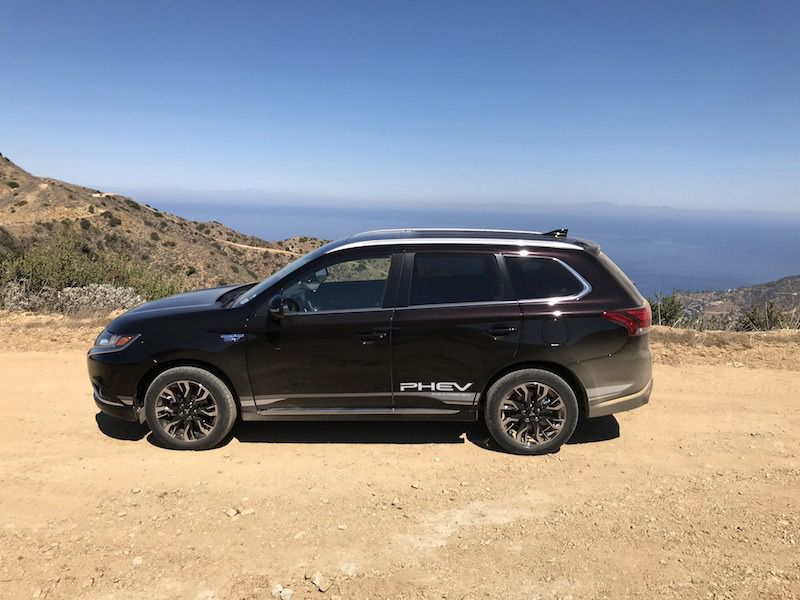
Photo by Matt Landish
2) Mechanically, it’s cutting-edge.
There’s a lot of technology working together to power the Outlander PHEV. An electrical generator is paired with a 2-liter, four-cylinder engine up front. This power a 12-kWh battery and sends power to the front wheels. The rest of the power comes from the rear wheels, by an electric motor nestled under the rear cargo floor. Total system power, Mitsubishi says, is 197hp. The instant-on torque from a standstill makes the Outlander feel more potent than that and should be great for around-town jaunts while providing plenty of punch when it comes time to merge onto freeways and the like.
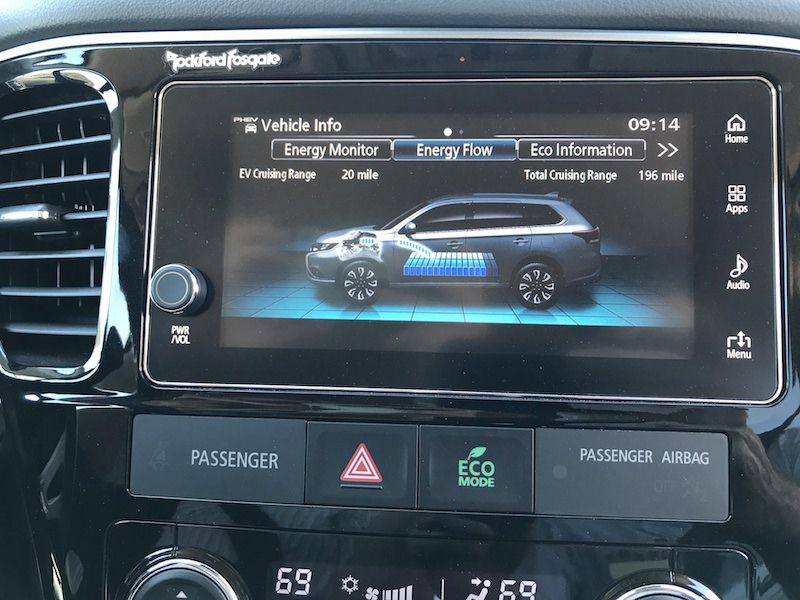
Photo by Matt Landish
3) Those who fear range anxiety should fear not.
DC Fast Charge? What’s that? An industry first for the PHEV segment, it means exactly what it says: Super-fast charging. Impressively, when hooked up to a compatible charging source, the battery can go from 0-80% in half an hour. A full charge will take four hours at 240 volts, and double that when using a standard 120-volt outlet.
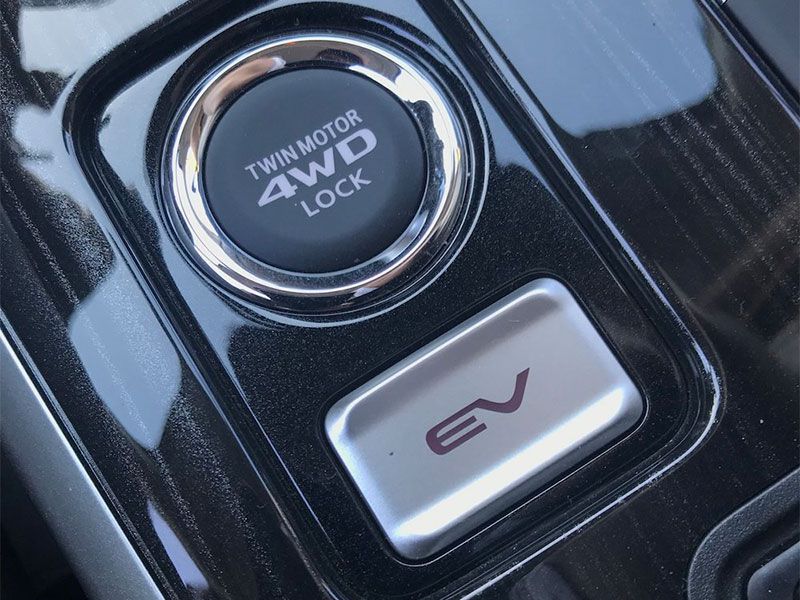
Photo by Matt Landish
4) The Outlander's interior exceeds expectations.
Sometimes vehicles that begin their lives in international markets don’t make it here with the full complement of convenience features the American consumer expects. Fortunately, that is not the case with the Outlander. Open the door, step inside, and you’re greeted by comfortable leather-appointed seats with a clear view out every window. Large, well-marked gauges shine through the steering wheel that's flanked on either side by metallic, column-mounted shift paddles that beg you to interact with them. Indeed, they toggle between different modes for regenerative braking, and the experience is almost videogame-like. More on that later. The climate controls are ergonomically placed, and the cup holder location and shifter are designed in a way to minimize cross-interaction, which is a good thing when your eyes are looking down the road. The touchscreen, which handles a ton of information, is a little on the small side, but the display is bright and responsive, so I have few complaints about its overall operation.
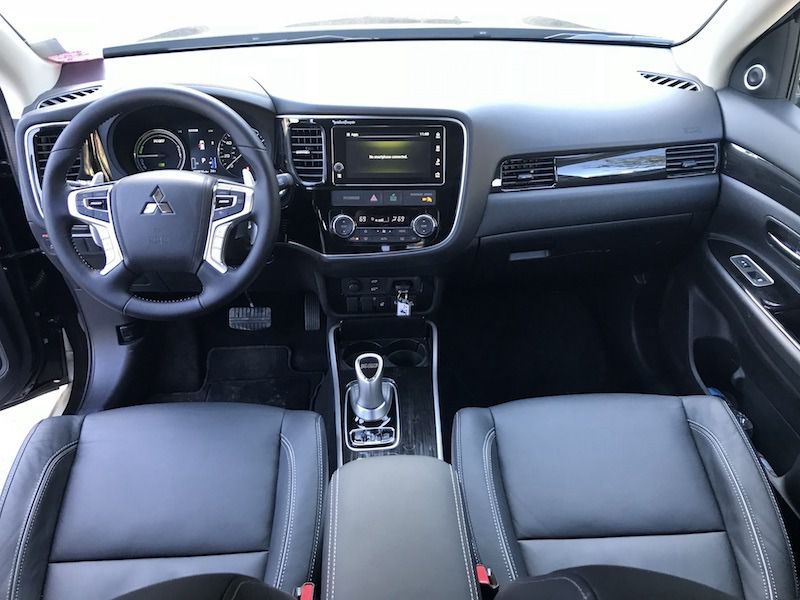
Photo by Matt Landish
5) The cargo space doesn’t get consumed by the Outlander’s hybrid packaging.
Buying a hybrid usually means there are packaging trade-offs – either by a reduction in rear seat space or losing precious cargo space. Neither is present here. The rear seats are comfortable enough and provide ample legroom even for adults. The cargo area is plentiful, even with the available subwoofer nestled into the back.
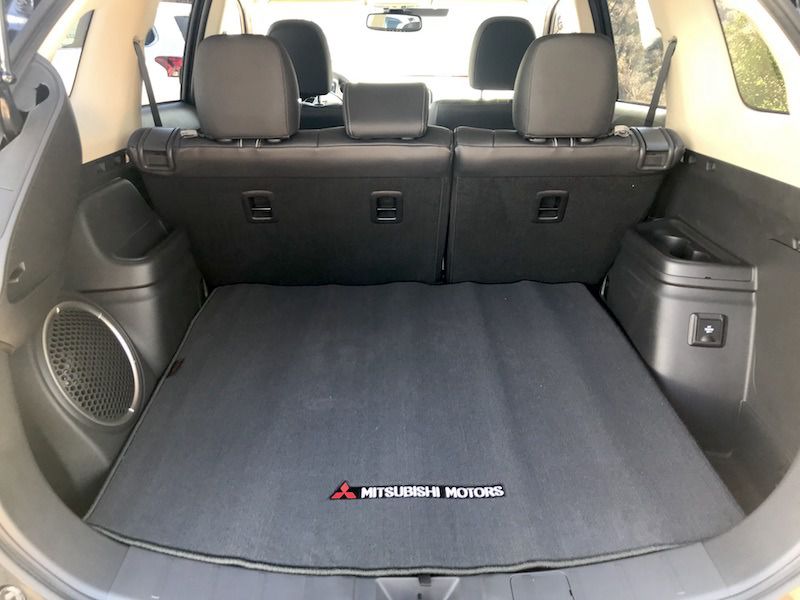
Photo by Matt Landish
6) It’s the perfect camping and tailgating companion.
A handy electrical outlet in the rear cargo area will power almost any kind of appliance – and will continue operating it even as the vehicle’s hybrid system is depleted – in which case, the engine will turn on and supply power to both the vehicle’s systems and any accessories attached to it. Neat party trick.
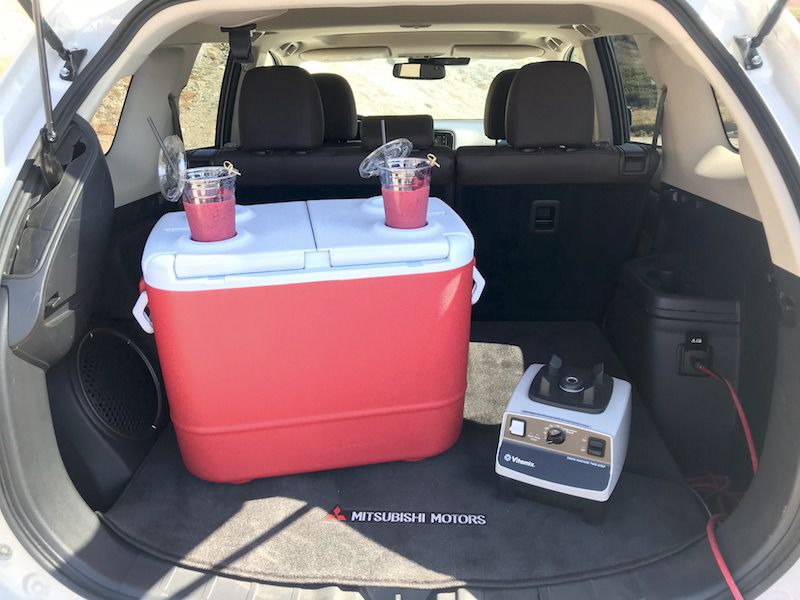
Photo by Matt Landish
7) Sounds good so far. But how does it drive?
A caveat first: The speed limit on Catalina Island is 25mph. However, with rocky, unpaved roads there was rarely an opportunity to push that limit. Within the confines of the law, the Outlander was confident and sure-footed even when ascending steep hills. The course had recommended points where different modes were tested, including sections optimized for the gasoline engine’s assistance. The seamless switching among driving modes was impressive and demonstrated the level of refinement Mitsubishi’s engineering team has instilled into the vehicle.

Photo by Matt Landish
8) You can use the paddle shifters to maximize your efficiency.
Typically paddle shifters are nothing more than ornamentation used during ‘spirited’ driving or when trying to stave off boredom on long trips. The Outlander PHEV’s are entirely more interactive and can help you become a better hybrid vehicle operator. By giving you six different levels of regenerative ‘braking’ to assist with recharging the batteries during hilly (and even flat) driving environments, you’ll quickly learn how to maximize efficiency when the road slopes, or when traffic mounts.
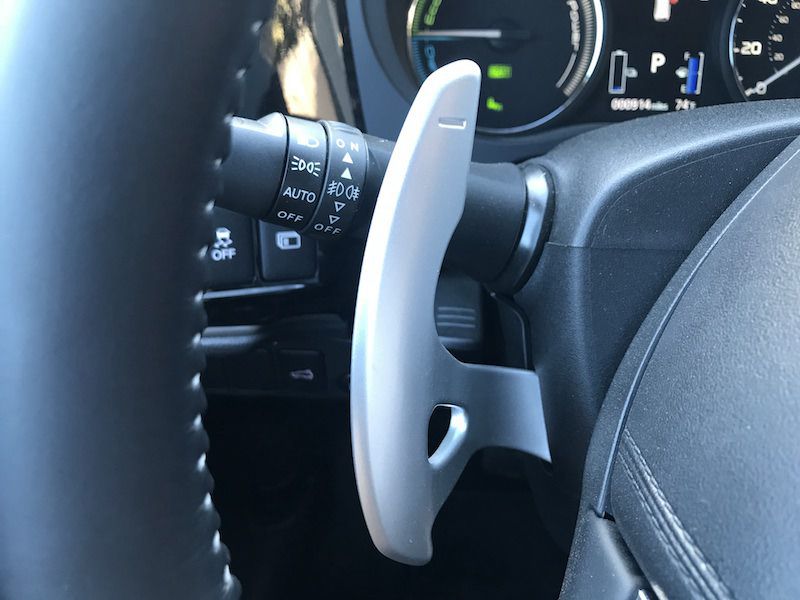
Photo by Matt Landish
9) The Outlander is surprisingly affordable.
It all comes down to price, and this was an opportunity for Mitsubishi to swing for the fences to attract new buyers. The 2018 Outlander PHEV starts at just $35,535. The fully-loaded, top-spec GT S-AWC narrowly crosses the $40k threshold, slotting in at $41,225. These prices include the destination charge of $940. Better still, Outlander PHEVs qualify for the federal tax rebate of up to $5,836. This is extremely aggressive pricing for a vehicle that has no competitors in its class.
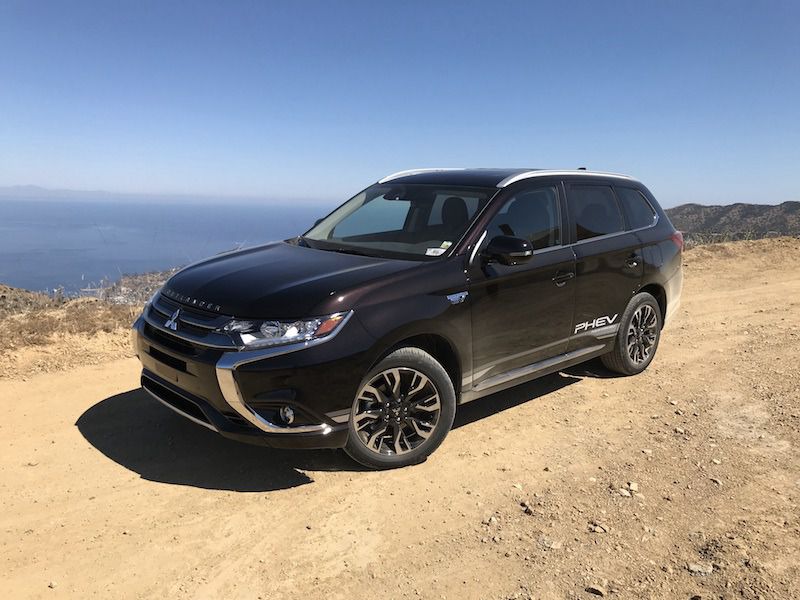
Photo by Matt Landish
10) OK, you've read this far. You should probably go drive one.
Mitsubishi says the Outlander PHEV will hit dealerships in December, and some dealers are already taking pre-orders. What are you waiting for?
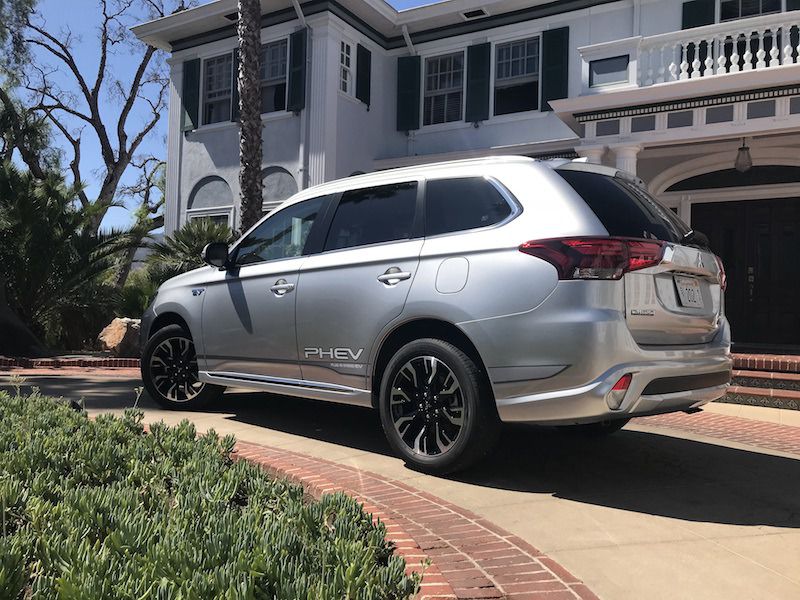
Photo by Matt Landish